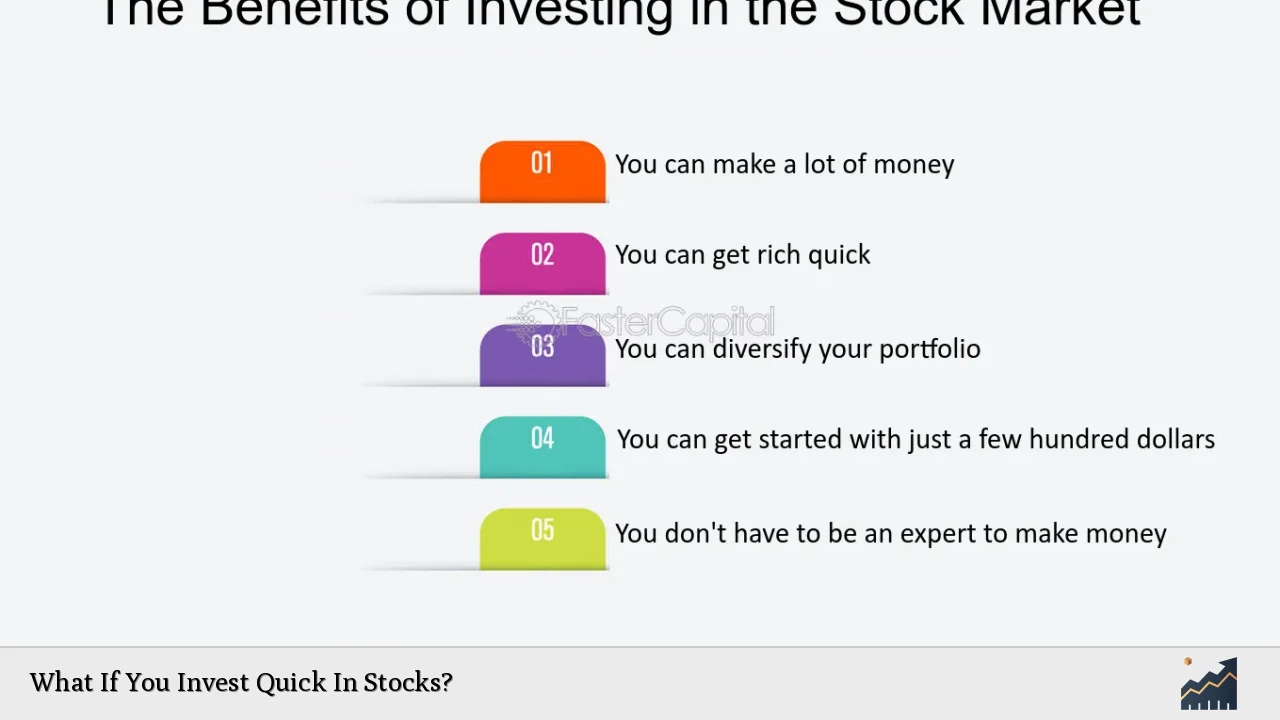Investing quickly in stocks can be an appealing strategy for many investors looking to capitalize on short-term market movements. This approach often involves buying and selling stocks within a short time frame, aiming to generate quick profits. However, it comes with significant risks and requires a solid understanding of market dynamics. This article will explore the implications of quick stock investments, the strategies involved, and the potential pitfalls to avoid.
| Aspect | Details |
|---|---|
| Investment Horizon | Short-term (days to weeks) |
| Risk Level | High |
| Potential Returns | Variable |
Investing quickly in stocks typically means engaging in active trading rather than adopting a long-term investment strategy. This can include day trading, swing trading, or momentum trading, each with its own set of techniques and risks. While the potential for high returns exists, so does the danger of substantial losses. Understanding the market’s volatility and having a clear strategy are crucial for anyone considering this approach.
The Appeal of Quick Stock Investments
The primary allure of investing quickly in stocks lies in the potential for rapid gains. Many investors are drawn to the idea of making money swiftly, especially when they see others profiting from short-term trades. Additionally, advancements in technology have made it easier than ever to execute trades quickly through online platforms and mobile apps.
- Market Volatility: Quick investments can capitalize on sudden price movements.
- Leverage: Many brokers offer margin accounts, allowing traders to borrow money to increase their purchasing power.
- Accessibility: Online trading platforms have democratized access to stock markets, enabling anyone with a smartphone to trade.
However, this approach is not without its challenges. The stock market is inherently unpredictable, and quick investments require a level of expertise that many novice investors may lack.
Strategies for Quick Investing
Engaging in quick stock investments necessitates specific strategies to maximize potential returns while managing risk effectively. Here are some common approaches:
Day Trading
Day trading involves buying and selling stocks within the same trading day. Traders aim to profit from small price fluctuations by executing multiple trades throughout the day.
- Requires constant monitoring of market trends.
- Traders often use technical analysis to make informed decisions.
- High transaction costs can eat into profits if not managed properly.
Swing Trading
Swing trading focuses on capturing gains over a few days or weeks. Traders hold positions longer than day traders but shorter than traditional investors.
- Utilizes both technical and fundamental analysis.
- Aims to profit from expected upward or downward market shifts.
- Less stressful than day trading but still requires vigilance.
Momentum Trading
Momentum traders buy stocks that are trending upward and sell those that are declining. This strategy hinges on the idea that stocks moving in a particular direction will continue doing so for some time.
- Relies heavily on market psychology.
- Requires quick decision-making and execution.
- Can lead to significant losses if momentum shifts unexpectedly.
Risks Involved in Quick Stock Investments
While quick stock investments can yield substantial rewards, they come with inherent risks that investors must acknowledge:
- Market Volatility: Rapid price changes can lead to unexpected losses.
- Emotional Decision-Making: The pressure to act quickly can result in impulsive decisions that deviate from a well-thought-out strategy.
- High Transaction Costs: Frequent trading can incur significant fees, which may negate profits.
- Leverage Risks: Using borrowed funds increases both potential gains and losses, amplifying risk exposure.
Investors must approach quick stock investments with caution and a clear understanding of their risk tolerance.
Essential Tips for Quick Stock Investing
To navigate the complexities of quick stock investing successfully, consider these essential tips:
Conduct Thorough Research
Before making any trades, conduct comprehensive research on potential stocks. Understanding market trends and company fundamentals can provide valuable insights into which stocks may be poised for movement.
Set Clear Goals
Define your investment goals clearly before entering any trades. Are you looking for short-term gains or trying to build a long-term portfolio? Setting specific targets can help guide your decision-making process.
Use Stop-Loss Orders
Implementing stop-loss orders can help mitigate losses by automatically selling a stock when it reaches a predetermined price. This tool is particularly useful in volatile markets where prices can fluctuate rapidly.
Diversify Your Portfolio
Even when investing quickly, diversification remains essential. Spreading your investments across different sectors or asset classes can help reduce risk and improve overall portfolio performance.
Stay Informed
Keep abreast of market news and developments that could impact your investments. Economic indicators, earnings reports, and geopolitical events can all influence stock prices significantly.
Conclusion
Investing quickly in stocks presents both opportunities and challenges. While the potential for rapid gains is enticing, it requires careful planning, research, and risk management. By understanding various strategies like day trading, swing trading, and momentum trading—and being aware of the associated risks—investors can make informed decisions that align with their financial goals. Ultimately, successful quick investing hinges on preparation and discipline rather than mere luck.
FAQs About Quick Stock Investing
- What is quick stock investing?
Quick stock investing involves buying and selling stocks within short time frames to capitalize on market movements. - Is quick investing suitable for beginners?
Quick investing carries high risks; beginners should ideally start with long-term strategies before attempting active trading. - What are the main risks of quick stock investing?
The main risks include market volatility, emotional decision-making, high transaction costs, and leverage risks. - How do I choose stocks for quick investing?
Choose stocks based on thorough research into market trends, company performance, and technical indicators. - Can I use leverage when investing quickly?
Yes, many brokers offer margin accounts that allow you to borrow funds for increased purchasing power; however, this amplifies both gains and losses.

